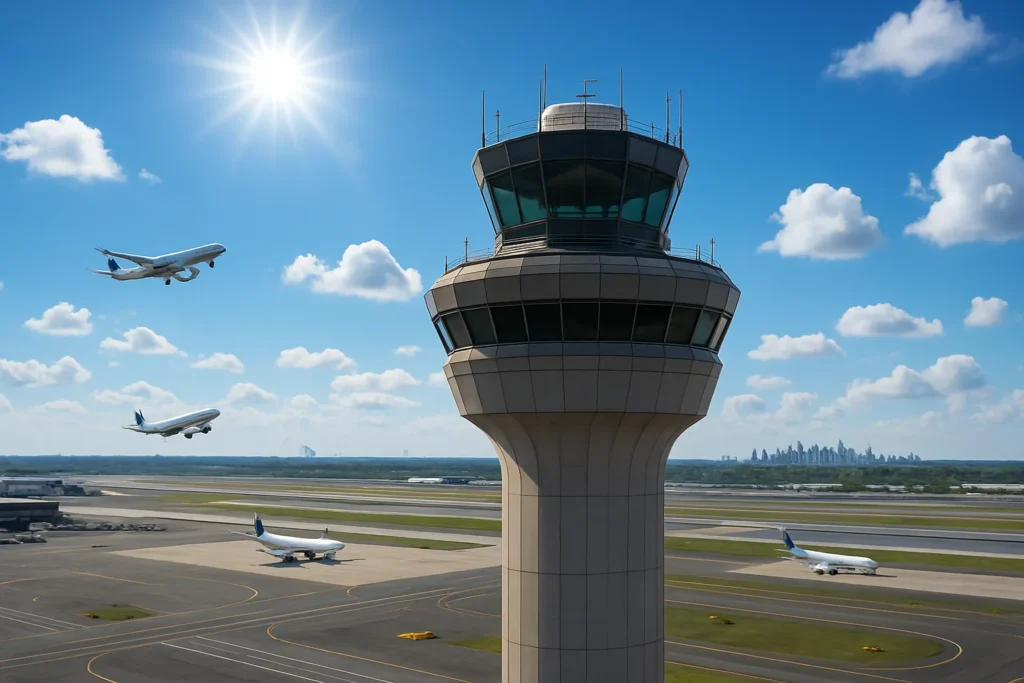Turbulence at Newark: Blame Games Land on the Tarmac
If you happened to be one of the unlucky travelers stuck in endless security lines or watching your departure time slip further into the night at Newark Liberty International Airport, you probably asked: how did it get this bad—and who’s responsible? Recent delays and outages have turned the nation’s 14th-busiest airport into a flashpoint for America’s broader infrastructure dysfunction, culminating in U.S. Transportation Secretary Sean Duffy calling out the Biden administration for the chaos. Yet, beneath the headlines, a political blame game rages on, clouding the complex realities of decades-long neglect.
During a press briefing, Duffy sharply criticized Secretary Pete Buttigieg and President Joe Biden, insisting they failed to repair an air traffic control system plagued by issues stretching back more than three decades. Rather than reckon with bipartisan inaction, battles over responsibility threaten to overshadow meaningful solutions. For stranded passengers and weary flight crews, what matters is not which politician grabs the microphone, but when the next takeoff might finally occur.
Historical context paints a sobering picture. According to the National Air Traffic Controllers Association, chronic underfunding and patchwork software upgrades have piled up since the late 1980s, leaving critical facilities like Newark’s radar center dependent on equipment long overdue for overhaul. Though the Federal Aviation Administration (FAA) has worked to modernize its technology with the ambitious NextGen project, political inertia—and, at times, reversals amid shifting administrations—regularly keep these efforts stuck in holding patterns.
Redistributing Blame: From Copper Wires to Claims of Neglect
At the heart of the current storm lies Duffy’s claim that moving Newark’s radar operations to Philadelphia—reconfiguring regional airspace—was poorly planned and inadequately tested. He’s asked the Office of Inspector General for a formal investigation, alleging that the Biden-Buttigieg administration botched crucial preparations and failed to anticipate the telecom headaches that followed. Critics, however, argue Duffy’s outrage is selective and politically charged.
Deeper scrutiny reveals more nuance. Under the Trump administration, funding for the FAA was flatlined, and hiring freezes left the agency short-staffed. As aviation analyst Mark Foster explained on NPR’s “Morning Edition,” “You can’t undo thirty years of disinvestment in a single term, no matter which party’s in charge.” Duffy has suggested that a comprehensive fix was sitting on a shelf at the end of Trump’s tenure—a claim critics quickly dismissed as revisionist.
The truth: both parties have presided over an underfunded, aging network. The 2023 FAA Reauthorization Act—which did pass bipartisan hurdles—included provisions for replacing decades-old copper wire with modern fiber-optic cables not only at Newark but also at John F. Kennedy and LaGuardia airports. Upgrades are ongoing, and the FAA has even formed an emergency task force to tackle the current round of outages and delays.
“You can’t overhaul a system overnight when you’ve spent nearly four decades kicking the can down the runway.”
— Mark Foster, Aviation Analyst
Tucked within these technical and political developments, there’s a larger story about American infrastructure as a whole. Why do the world’s wealthiest democracies allow cornerstones like air travel to be jeopardized by partisanship, funding bottlenecks, and short-term vision? And isn’t it telling that only during a crisis does serious attention—and money—materialize?
Reckoning With Reality: Building Forward or Stuck on Repeat?
Looking forward, the Biden administration has approved unprecedented investments in airport modernization as part of a broader effort to revive neglected public works. The decision to replace outdated wiring, add telecommunication connections between New York and Philadelphia, and employ a software fix to prevent future shutdowns is a step in the right direction. Timing, however, is critical. Congress must greenlight additional plans quickly, especially as air travel rebounds post-pandemic and the industry faces a nationwide shortage of certified controllers. According to a Pew Research Center report, the U.S. will face up to a 20% shortfall in critical aviation staff within the next five years if current trends persist.
What does this mean for ordinary Americans? The repercussions of decades of accumulating neglect are now felt in frayed nerves, missed family reunions, and lost business opportunities. While the politics might feel like background noise to frustrated travelers, these disputes have very real implications. “We know infrastructure isn’t a red issue or a blue issue—until it breaks,” observes Harvard policy expert Theresa Liu. “Voters want government to solve real problems, not point fingers.”
Election season only intensifies the temptation to weaponize technical breakdowns for political gain. The Biden administration’s investments will take time to bear fruit, while Republican critics—like Duffy—fasten their narratives to every delay as proof of Democratic incompetence. Yet, as history continually proves, the rot predates current headlines. Ronald Reagan’s infamous firing of more than 11,000 air traffic controllers in 1981 opened wounds in the profession that have not fully healed, setting in motion decades of labor tension and chronic shortages.
Policy debate over air traffic modernization deserves public engagement, not partisan scolding. Americans expect more than recycled slogans and blame games when safety and efficiency are at stake—especially in the skies where delay and error can turn tragic in a heartbeat. Progressive thinkers and experts agree: modernizing infrastructure requires sustained, collective action—something that can’t be done through finger-pointing or administrative patchwork. The stakes are too high and the memories of airport gridlock too fresh to settle for less.

